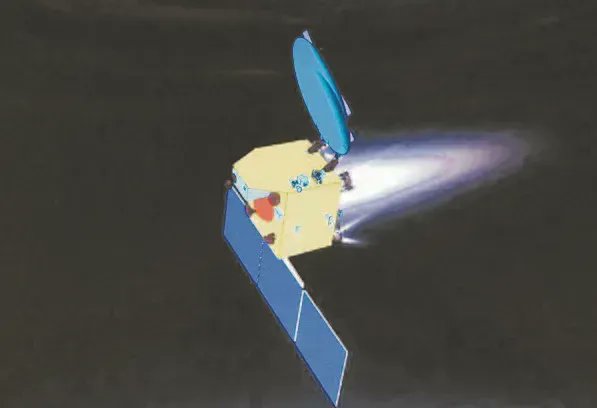

Scientists and engineers seem to have difficulty coming up with estimated mission timelines for their space exploration projects. Most don’t even reach the first day after succumbing to one form or another of technical failure, sometimes resulting in a dramatic fireball. Others have missions that extend orders of magnitude longer than they were originally designed for. Such is the case for India’s first mission to the Red Planet, which finally seems to have run out of fuel eight years into its original six-month mission.
The mission, known colloquially as the Mars Orbiter Mission, or MOM, was initially launched in 2013 and entered an orbit around Mars in 2014. While in orbit, it spent the better part of eight years collecting data to send back to its operating scientists at the Indian Space Research Organization (ISRO).
Though technically planned as a technology demonstrator, MOM, also known as Mangalyaan (or “Mars craft” in Sanskrit), carried five scientific instruments, which, while they were relatively small and inexpensive, weighing in at just over 15 kg for the whole payload, they also provided critical insight into areas that scientists didn’t understand about Mars at the time.
One of those critical areas was methane – there was a long-standing debate about the sources of methane in Mars’ atmosphere, and MOM helped to provide some insight into that. It acted as an excellent complement to other, more advanced, and therefore more expensive, western orbiter efforts such as Maven, which was launched around the same time.
But all good things must come to an end, and that was no exception for MOM. The spacecraft was designed to withstand many of the challenges associated with orbiting around the Red Planet, including using a limited supply of fuel to dodge out of the way of eclipses so that its batteries wouldn’t be too diminished before being recharged by its on-board solar panels.
However, the fuel it used for maneuvering eventually ran out, and it was unable to dodge out of the way of an eclipse that lasted more than seven hours. Its batteries were designed to withstand an eclipse that lasted less than two hours. So when the craft finally emerged from the eclipse, its batteries were below the critical threshold that would allow it to restart. ISRO eventually declared the craft as officially decommissioned on October 3rd.
It leaves a generally positive legacy, though. India was one of the first countries to successfully introduce a craft to the Mars system on its first try. America and the Soviet Union suffered plenty of setbacks before the current round of successful rovers (and helicopters) traversing the planet.
That being said, the next step for ISRO in its Mars exploration program remains unclear. While the organization solicited ideas for a follow-up mission to Mars in 2016, no discernible progress has come through on that front in the last six years.
Despite that stagnation, ISRO should be proud of the work they already put in on MOM and of the scientific data that it collected. The more countries that can interact with Mars in one way or another, the better.
Learn More:
The Tribune – No fuel, India’s Mars Orbiter craft quietly bids adieu
UT – India’s Historic 1st Mission to Mars Celebrates 1 Year in Orbit at Red Planet
UT – Indian Mars Orbiter Shoots Spectacular New Images of Sheer Canyon and Curiosity’s Crater
UT – Dazzling Gallery From India’s MOM Mars Orbiter Camera
Lead Image:
Artist’s depiction of MOM in flight.
Credit – The Tribune
Astronomers have been battling threats to their clear skies on all fronts lately. One of…
If you were Captain of the first USS Enterprise, where would you go!? Humanity is…
Now is the best time to observe Mars in 2025. Mars from 2014. Credit: Paul…
Scheduled for launch in 2027, the Nancy Grace Roman Telescope is slowly being readied for…
Few places in the solar system are better suited to a balloon than Titan. The…
We reported before about a NIAC-funded project known as the Lofted Environment and Atmospheric Venues…